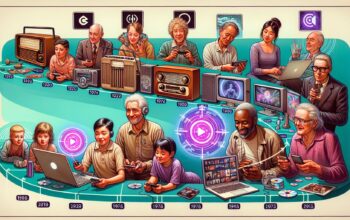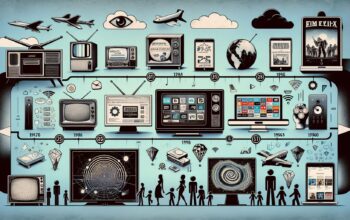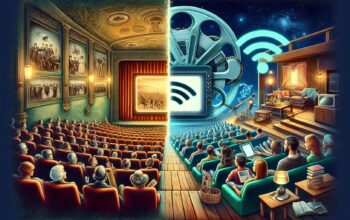
We live in a rapidly evolving world where staying abreast with the current trends, particularly in the entertainment industry, is critical. From the traditional dependency on cable television, entertainment consumption has evolved significantly in the last decade. There has been a notable shift from cable to streaming services, and this revolution has drastically encouraged the birth of a new entertainment culture.
In the late 2000s, streaming platforms started making their way into people’s living rooms with Netflix being the pioneer. These internet-based entertainment providers made it possible for audiences to access a massive catalog of movies, series and documentaries at a cheaper price compared to paying for hefty cable packages. With an internet connection and a compatible device, one could enjoy hours of non-stop entertainment.
As streaming services began to prosper, more competition entered the arena. Amazon Prime Video and Hulu were among the early contenders vying for customer attention. Both platforms provided something different; Amazon Prime Video offered add-on subscriptions to channels like HBO and Starz, while Hulu appealed to audiences who wanted to watch popular current-season TV shows from networks like NBC and Fox.
The continued growth in the streaming industry led to the emergence of more platforms such as Disney+, HBO Max, and Apple TV+. These platforms noted the importance of original content in capturing and retaining subscribers, leading to a surge in revolutionary shows and movies being produced exclusively for online viewership.
As streaming platforms popularity grew, so did the change in viewership trends. Netflix’s “binge-watch” model became a cultural phenomenon. This model, allowing viewers to watch an entire television season in one sitting, has reshaped viewers’ consumption habits, but it is also dramatically altering the way storytellers approach their craft.
The rise of streaming services has also significantly impacted traditional media formats. Cable TV networks have seen their viewership numbers dwindle as more people cut the cord. The industry has had to adapt, with some channels offering their content on demand, while others have created their streaming platforms.
Furthermore, movie theaters have also felt the effects of this paradigm shift as streaming platforms premiere box-office worthy films on their platforms. The COVID-19 pandemic accelerated this change, with many movies being released on streaming platforms simultaneously with, or even before, their physical theater releases.
As the saying goes, “Content is King,” and in this digital age, streaming services are the new kingdoms. They offer a convenience that traditional formats can’t match. This revolution in entertainment culture has not only changed how we consume content but also how the content is created and marketed.
The importance of staying informed in the swiftly changing world of entertainment cannot be overstated. One must be aware of the escalating streaming wars, the trends in online viewership, and the subsequent impacts on traditional media formats. As these platforms revolutionize the way we consume entertainment, they also shape our perceptions of the world around us.
In conclusion, the streaming revolution is more than just a switch from traditional TV. It’s a cultural shift that has redefined modern entertainment, altering audiences’ viewing habits and expectations. It’s interesting to observe this dynamic growth phase in entertainment history and stay updated as it continues to evolve. At present, it is crystal clear that the rise of the streaming services is far from over.



